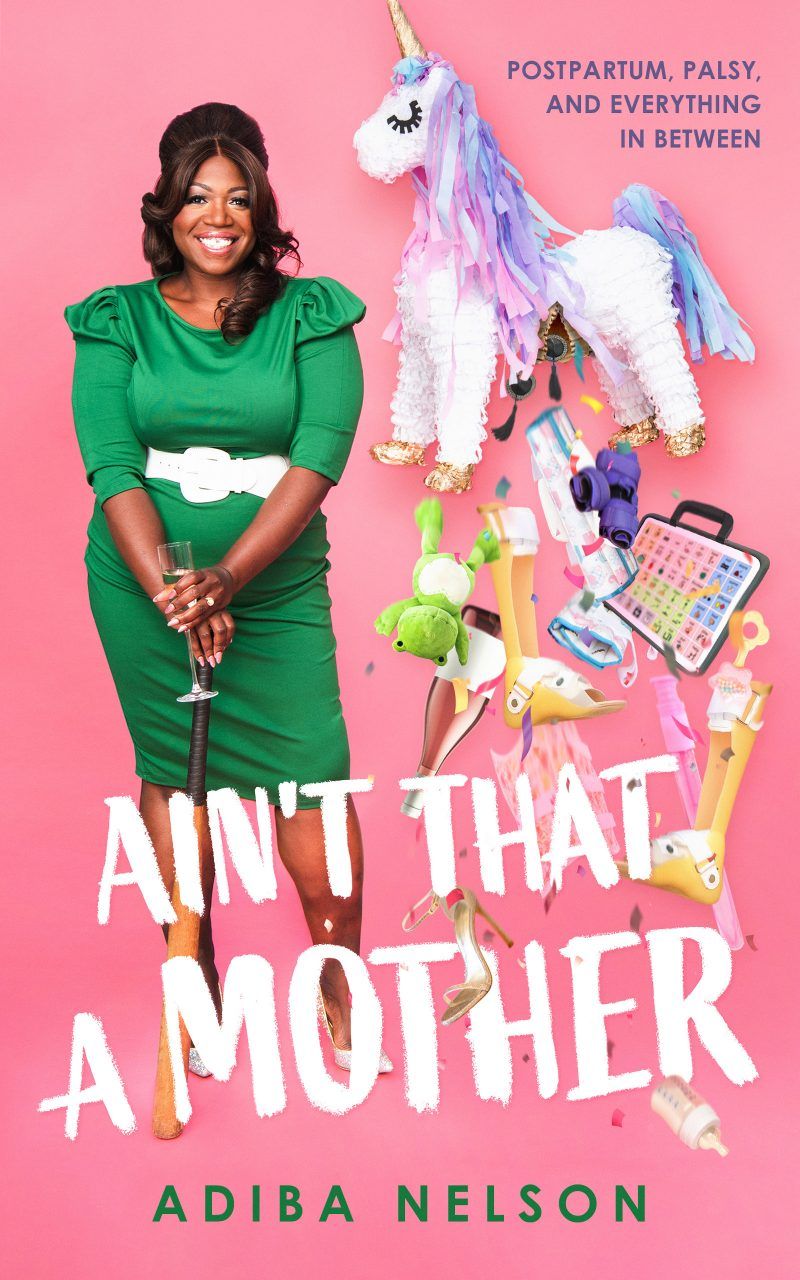
Source: BlackStone Publishing / Adiba Nelson
If you aren’t aware of Adiba Nelson, well now is the time to do your Googles—and get familiar. Nelson’s name rings bells in parenting circles for her commentary and advocacy around Black motherhood at the intersection of diversity, disability and inclusion. She’s done TED Talks and was featured on The Morning Blend to discuss and ensure vulnerable children are seen, served and normalized in the literary sphere. As mom to her daughter Emory, a witty 11-year-old with special needs, she has written for national publications about the highs and lows and the whoas and ohs of raising a child with disabilities. In 2013, Nelson authored, Meet Clarabelle Blue, a children’s book about a Black girl with a disability teaching the world around her about inclusion.
This go around, Nelson is writing about herself: A fearless Black woman—who has experienced challenges many people can’t even begin to wrap their heads around, furthermore endure and emerge unbroken, laugh-out-loud funny and that much more gutsy—in her forthcoming book, Ain’t That A Mother.
MADAMENOIRE got exclusive dibs for the book’s cover reveal and to chop it up with Adiba Nelson on her writing journey and what we might expect from the text without diving into spoilers.
MADAMENOIRE: So we’re doing a cover reveal—and it is gorgeous I might add—for this book you’ve written and we can expect the pub date to be May 3, right?
Adiba Nelson: Yeah, thank you for that by the way.
MN: I want to talk about the cover itself before we switch topics. We don’t expect the meaty details because we’ll circle back when the book comes out. So tell us about the cover. It’s pink. I see green. I’m getting some AKA vibes here. Are you an AKA?
Nelson: I am not an AKA. I am not. Pink is my power color. I love it, pink and gold really. It’s my divine feminine. I knew I wanted pink to be a part of it.
MADAMENOIRE: Tell us more.
Nelson: Actually, I did a photoshoot with four different looks for the cover. So, I did a photoshoot for my author photo, and it was a really beautiful picture, but it was very “that’s a nice black lady” type of photo. They (publishers) were like “Do you want to use this as the cover?” I was like ‘What, oh no, no, no.’ They were like “It’s so beautiful” and I was like “Y’all don’t really know me.” My friends would look at that and ask, “Who is this? That’s not Adiba. Who is this?”
So, I sent them some photos from a boudoir shoot I did years ago that were just hilariously absurd but really showed my personality. Essentially, it was me in a pool, in high heels and a pair of panties. I might have had a bra on, I don’t remember. I was drinking a glass of wine, laying on the side wall inside the pool. I was like ‘this is absurd, but it’s gorgeous and it’s me.’ People don’t drink wine in their pool.
MN: Clearly, Adiba does
Nelson: —Because that’s what my motherhood looked like. My motherhood is that absurd. So, I sent them that and they were like “Why don’t we do a photoshoot and send us your favorite pics?” And I was like ‘Cool!’ It worked out for me because I’m a Scorpio and I like to control shit. Everyone has this idea that motherhood is great and wonderful, that it’s pretty and perfect. But sometimes it doesn’t look like that?
MN: It doesn’t, and definitely not according to this cover.
Nelson: Right, I was thinking what does my life look like? It’s a party. There is a pinata at times, maybe candy …
MN: Right and we’re seeing some stuffed animals, leg braces?
Nelson: Yep. My daughter has Cerebral Palsy and Bilateral schizencephaly which is a brain malformation. Her brain malformation starts from the Cerebral Palsy and basically makes it difficult for her motor planning. Motor planning is basically when your brain tells you to perform a motor skill. She has to wear leg braces and she wears a hand brace. There were times where she would wear a back brace. We were like the Bionic family over here, it’s ridiculous.
She was also using a communication device which is also a part of this disability. She is semi-verbal and in this world, you have to be able to communicate. There are times where she has to wear two leg braces at a time; one would go over her ankles and feet and then ones that go up to her thigh so she can really get her motor planning in. But tempering with all of that it is a lot of fun and there’s a lot of joy, which is why I thought we should add the pinata in there because there is fun. We have a blast living our daily life.
MN: We see shoes on the cover.
Nelson: Right—right.
MN: —And a wine glass.
Nelson: Every day.
MN: There is a wine bottle and a baby bottle. Those two things can coexist, yes?
Nelson: They can absolutely coexist! Sometimes they have too!
MN: Yes, yes. I think what I appreciate about this cover is the thing that drew me in. I was connected to the leg braces. I identify with those because my mother wore leg braces at one point in my childhood. That pulled me and made all the objects visible. I’m thinking about how other people might connect and how the objects connect to your story.
Nelson: Yeah, because when you put it all together, you’re like “damn ain’t that a mother? All of this? But then at the same time it’s a double entendre because I am a mother—and all the things you have to do in motherhood.
MN: What does this cover reveal mean to you at this point, you know in your journey?
Nelson: Gosh, this is a great question. It’s real. it’s cemented. It’s no longer a figment of my imagination that I wrote about.
This cover also means representation. Not just representation for big girls, or dark skin girls, or even necessarily special needs parents but specifically Black special needs parents. When I tell you that I rarely see us out with our babies, I’m not just saying that because I live in Tucson, Arizona, a town that is only 5 or 6% Black. We’ve been going to the same clinic for 10 years now and I can count on one hand the number of times I’ve seen other Black families there. At the summer camp Emory goes to, aside from one of the counselors, she’s the only Black girl. When we’re out and about, and that’s often because I’m social and she’s a kid so where I go she goes, I never see us. I think there’s this unspoken thinking in our community that we just don’t bring our babies with disabilities out into the world because the world is cruel. And yes, it is. Historically speaking, anything seen as “less than” in a Black family was discarded and deemed unworthy. So there’s this innate desire to protect our babies. And I get that. With my whole heart, I get that. But dammit we’re here. We’re here now, and I’ll be damned if anybody is ever going to make my child feel inferior in this day and age. This cover is for the other Black special needs families. Come out—be out here with me. I want to see more of us in mainstream media. I want us Everywhere and so this cover is also how I contribute to the diversity that is so sorely lacking in the media representation of special needs families. I’d like to change that tide a bit, ya know?
MN: That is a whole word. Amen to that. We have the cover, the pub date is in May and we are rooting for you and waiting to sink our teeth into Ain’t That A Mother. Thank you for sharing with us.
Nelson: Well, thank you so much, Ida. I appreciate it. I appreciate it so much! Your interest in the cover and being able to reveal it with MADAMENOIRE. It’s an honor to have my first book and my first cover reveal go out to the world through a platform that amplifies women like me. Shines a spotlight on us, it’s a real beautiful thing and opportunity and I feel really blessed. So, thank you!


